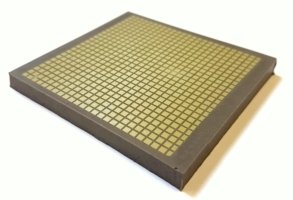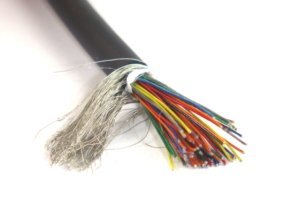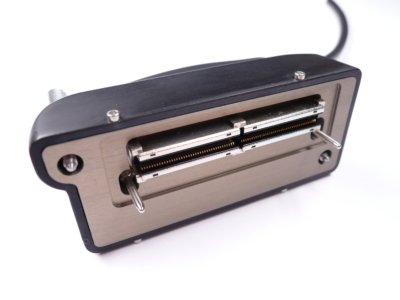Piezocomposite material
Specially-designed piezocomposite material is inserted in each type of probe. The composite components and geometry are defined according to the temporal and frequency response specifications, while retaining high sensitivity and signal-to-noise ratio level. For phased array probes, the piezocomposite material is also designed to lower the cross-coupling between adjoining elements, which is necessary to properly steer the beam with electronic delay laws. Typical cross-coupling is lower than –30dB.


